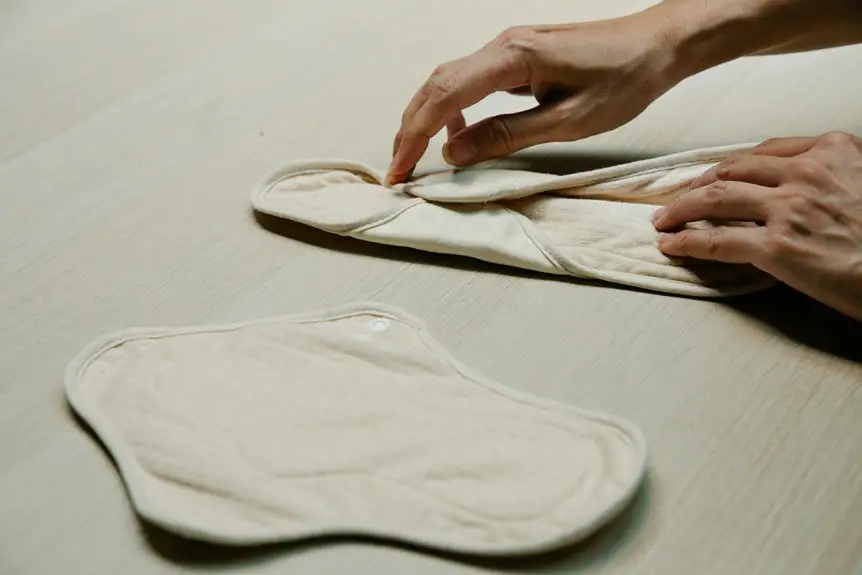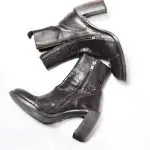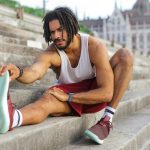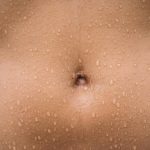When choosing fabrics, you might wonder why some clothes feel dry and fresh during workouts while others soak up moisture comfortably throughout the day. Understanding how wicking and absorbent fabrics manage sweat can help you pick the right material for your needs. Whether you’re gearing up for intense activity or seeking casual comfort, knowing the science behind these fabrics can make all the difference. Let’s explore what sets them apart and when each works best.
Table of Contents
Key Takeaways
- Wicking fabrics pull sweat away for quick evaporation, keeping skin dry and cool during intense physical activity.
- Absorbent fabrics soak up moisture, providing gentle retention and comfort for everyday wear or light workouts.
- Choose wicking fabrics for active sports and outdoor activities to regulate temperature and reduce dampness.
- Opt for absorbent fabrics for casual wear, cooler conditions, and home items like towels and bedding.
- Wicking fabrics often use synthetics with environmental concerns; absorbent fabrics typically use eco-friendlier natural fibers.
How Moisture-Absorbing Fabrics Work
Moisture-absorbing fabrics pull sweat directly into their fibers, trapping it to keep you feeling dry on the surface. When you wear these fabrics, you’ll notice how moisture interaction works to draw sweat away from your skin. The fibers act like tiny sponges, soaking up the moisture and preventing it from pooling on your body.
However, this process depends heavily on fabric breathability. If the fabric doesn’t allow air to circulate well, trapped moisture might linger, making you feel damp after prolonged wear.
The Science Behind Moisture-Wicking Fabrics
You’ll notice moisture-wicking fabrics pull sweat away from your skin through tiny channels in the material.
These fabrics use specialized fibers that help transfer moisture to the outer surface, where it evaporates quickly, keeping you cool.
Understanding how the fabric’s structure works with evaporation explains why they outperform absorbent fabrics in active wear.
Moisture Transfer Mechanism
Although it might seem simple, the way moisture-wicking fabrics move sweat away from your skin involves a complex process.
These fabrics rely on moisture dynamics, using capillary action to pull sweat from your skin’s surface and spread it across a larger area. This rapid transfer speeds up evaporation, helping keep you dry and comfortable.
Comfort factors like breathability and fabric structure play important roles in how efficiently this moisture moves. When sweat evaporates quickly, your body temperature regulates better, reducing clamminess and irritation.
Understanding this moisture transfer mechanism helps you choose the right fabric for your activity, ensuring best performance and comfort without the heaviness that absorbent materials might bring.
Fabric Material Roles
Understanding how moisture moves is just part of the story; the materials used in moisture-wicking fabrics play a big role in making that happen effectively.
You need to grasp fabric composition essentials to choose the right textile that not only moves moisture but also stands up to wear and tear.
Textile durability considerations guarantee your gear lasts through repeated use and washing.
Here’s what matters most:
- Synthetic fibers like polyester and nylon excel at moisture transport.
- Blends can balance comfort and performance.
- Fabric weave impacts breathability and drying speed.
- Finishes or treatments enhance wicking properties and durability.
Evaporation and Cooling
When moisture reaches your skin, evaporation kicks in as the key process that cools you down.
Moisture-wicking fabrics are designed to pull sweat away from your skin to the fabric’s surface, where it can evaporate faster. This increases evaporation rates, enhancing the cooling effects you feel during physical activity.
Unlike absorbent fabrics that hold onto moisture, wicking materials keep you dry by constantly moving sweat away, preventing that damp, uncomfortable feeling.
As the sweat evaporates, it removes heat from your body, helping regulate your temperature efficiently.
Key Differences in Sweat Management
Since sweat can make you uncomfortable and affect your performance, choosing the right fabric matters.
Wicking and absorbent fabrics manage sweat differently, impacting your sweat regulation and performance enhancement. Here’s how they differ:
- Wicking fabrics pull moisture away from your skin, keeping you dry and cool.
- Absorbent fabrics soak up sweat, which can leave you feeling damp.
- Wicking supports faster evaporation, aiding in temperature control during intense activity.
- Absorbent fabrics may slow drying time, which can affect comfort during prolonged workouts.
Understanding these differences helps you pick fabrics that match your activity level and comfort needs, ensuring you stay dry and perform your best.
When to Choose Absorbent Fabrics
You’ll want to choose absorbent fabrics when you need everyday comfort that holds moisture gently against your skin.
These fabrics are great for situations where retaining some moisture benefits your comfort or skin health.
Think about using them in cozy home items like towels, bathrobes, or bedding.
Everyday Comfort Needs
Absorbent fabrics excel at soaking up moisture, making them ideal for everyday comfort needs. When you want clothing that keeps you dry and cozy throughout your casual wear or active lifestyle, these fabrics are your go-to.
Here’s when you’ll appreciate absorbent materials most:
- After a light workout, when you want your shirt to gently soak sweat without feeling clammy.
- During relaxed weekends, wearing tees and hoodies that feel soft against your skin.
- While running errands or lounging at home, where comfort and moisture control matter.
- On cooler days, when absorbent fabrics help maintain warmth by holding moisture close.
Choosing absorbent fabrics guarantees you stay comfortable without the rush of moisture moving away, perfect for your daily routine.
Moisture Retention Benefits
When you need fabric that holds onto moisture instead of pushing it away, materials with strong moisture retention come into play.
Choosing absorbent fabrics helps you manage moisture by trapping it within the fibers, which is essential in situations where keeping the skin slightly damp improves comfort or skin health.
This type of moisture management supports fabric performance by preventing rapid drying, which can be beneficial in cooler environments or during activities that don’t generate excessive sweat.
Absorbent fabrics excel at maintaining a stable microclimate close to your skin, reducing irritation caused by abrupt moisture shifts.
Suitable Home Applications
Choosing fabrics that retain moisture can transform how comfortable and effective your home textiles feel.
When it comes to towel selection and bedding materials, absorbent fabrics shine by soaking up moisture, keeping you dry and cozy.
You’ll want to choose absorbent fabrics for these home applications:
- Bath towels that need to dry your skin quickly and thoroughly.
- Bedding materials like sheets and pillowcases that manage nighttime sweat.
- Kitchen towels that soak up spills without spreading moisture around.
- Cleaning cloths designed to trap and hold liquids efficiently.
Ideal Uses for Wicking Fabrics
Because wicking fabrics pull moisture away from your skin, they’re perfect for activities where you’re likely to sweat. When you’re hitting the gym or going for a run, active wear made from wicking materials keeps you dry and comfortable by enhancing moisture control.
These fabrics also excel during outdoor activities like hiking or cycling, where staying dry helps regulate your body temperature and prevents chafing. If you want to boost your athletic performance, wicking fabrics are a smart choice since they reduce the discomfort of damp clothing.
Whether you’re training hard or enjoying a casual outdoor adventure, choosing wicking fabrics supports your body’s natural cooling system and keeps you feeling fresh throughout your activity.
Environmental and Health Factors to Consider
Although wicking fabrics offer performance benefits, you should also weigh their environmental and health impacts before making a choice.
Sustainability considerations and health implications play a vital role in deciding between wicking and absorbent fabrics. Here are key points to keep in mind:
- Many wicking fabrics are synthetic, often derived from petrochemicals, which may contribute to environmental pollution.
- Absorbent fabrics like cotton can require significant water and pesticide use, impacting sustainability.
- Some wicking materials may release microplastics during washing, posing ecological risks.
- Health-wise, natural absorbent fabrics might reduce skin irritation, while synthetic wicking fabrics could cause allergic reactions in sensitive individuals.
Balancing performance with these factors helps you make an informed, responsible fabric choice.
Maintaining Performance and Longevity of Both Fabric Types
Understanding the environmental and health impacts of wicking and absorbent fabrics is just one part of the equation.
To keep both fabric types performing well and lasting longer, you need proper fabric care. For wicking fabrics, avoid fabric softeners and high heat when washing, as they can clog fibers and reduce moisture-wicking ability. Instead, use mild detergent and air dry or tumble dry low.
Proper care, like avoiding fabric softeners and high heat, keeps wicking fabrics effective and long-lasting.
Absorbent fabrics benefit from regular washing to prevent buildup of oils and dirt that reduce absorbency. Use gentle cycles and avoid bleach, which can weaken fibers.
Following these maintenance tips will help preserve the unique qualities of each fabric, ensuring they stay effective and comfortable wear after wear.
Taking care of your fabrics means you get the best performance and value over time.
Frequently Asked Questions
Can Moisture-Wicking Fabrics Be Blended With Natural Fibers?
Yes, you can blend moisture-wicking fabrics with natural fibers using advanced blending techniques. This combo lets you enjoy natural fiber benefits like breathability while enhancing moisture management, keeping you comfortable during active or everyday wear.
Are There Any Fashion Brands Specializing in Absorbent Fabrics?
Picture soft cotton soaking up morning dew—absorbent fabric brands like Patagonia and Tentree embrace this in their collections. You’ll find these sustainable choices rising with fashion industry trends focused on comfort and eco-consciousness.
How Do Absorbent Fabrics Perform in Humid Climates?
In humid climates, absorbent fabrics can feel heavy since they soak up moisture but don’t dry quickly. You’ll want to contemplate fabric breathability because high humidity effects make drying slower, which might leave you feeling damp and uncomfortable.
Can Wicking Fabrics Help Reduce Body Odor?
Before smartphones, knights relied on armor; today, you can trust modern fabric technology. Wicking fabrics enhance odor control by swiftly moving sweat away, reducing moisture where bacteria thrive, so you’ll stay fresher during active days.
What Innovations Are Emerging in Moisture Management Textiles?
You’ll find smart textiles using sensors to monitor moisture and adjust breathability. Plus, sustainable materials like recycled fibers are emerging, letting you stay dry while supporting eco-friendly choices in moisture management fabrics.
- Where to Buy Sherpa Suede Fabric - July 12, 2025
- How to Draw or Illustrate the Texture of Suede Fabric - July 12, 2025
- What Is Baseball Suede Leather Fabric? - July 12, 2025







